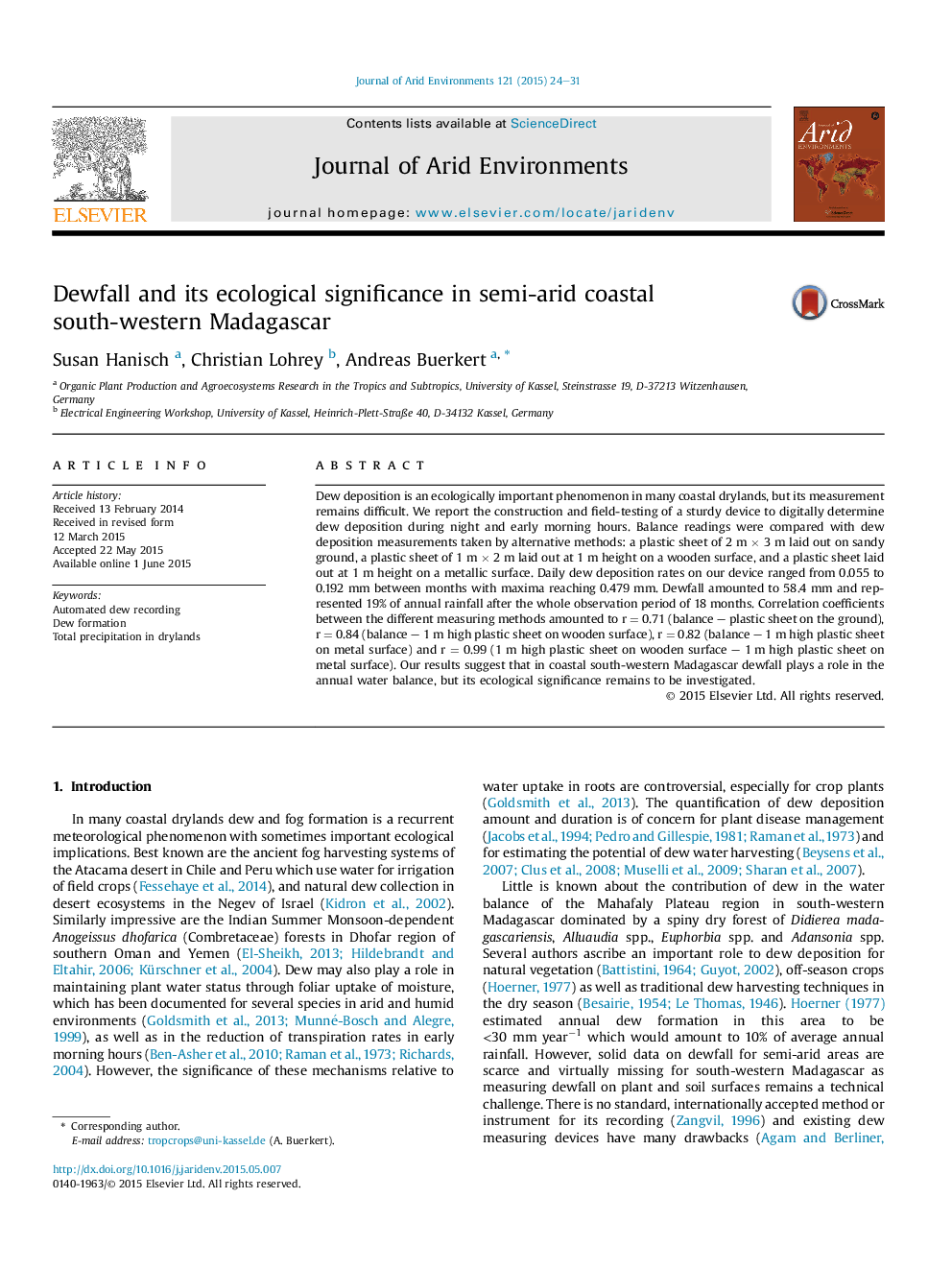| Article ID | Journal | Published Year | Pages | File Type |
|---|---|---|---|---|
| 6303169 | Journal of Arid Environments | 2015 | 8 Pages |
â¢Litte is known about dewfall and its ecological significance in SW Madagascar.â¢A digital dew balance was designed, field tested and compared to dew readings.â¢Dew formation was 5-10% of annual rainfall.â¢Significance of dew formation is much smaller for crops than for natural vegetation.
Dew deposition is an ecologically important phenomenon in many coastal drylands, but its measurement remains difficult. We report the construction and field-testing of a sturdy device to digitally determine dew deposition during night and early morning hours. Balance readings were compared with dew deposition measurements taken by alternative methods: a plastic sheet of 2 m Ã 3 m laid out on sandy ground, a plastic sheet of 1 m Ã 2 m laid out at 1 m height on a wooden surface, and a plastic sheet laid out at 1 m height on a metallic surface. Daily dew deposition rates on our device ranged from 0.055 to 0.192 mm between months with maxima reaching 0.479 mm. Dewfall amounted to 58.4 mm and represented 19% of annual rainfall after the whole observation period of 18 months. Correlation coefficients between the different measuring methods amounted to r = 0.71 (balance - plastic sheet on the ground), r = 0.84 (balance - 1 m high plastic sheet on wooden surface), r = 0.82 (balance - 1 m high plastic sheet on metal surface) and r = 0.99 (1 m high plastic sheet on wooden surface - 1 m high plastic sheet on metal surface). Our results suggest that in coastal south-western Madagascar dewfall plays a role in the annual water balance, but its ecological significance remains to be investigated.
Graphical abstractDownload full-size image
